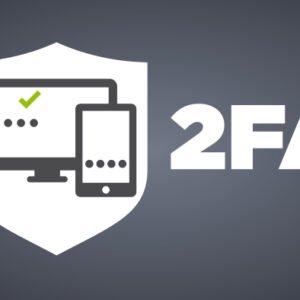Why this guide matters (and why the “pros” don’t panic)
The crypto drainer economy professionalized fast: phishing‑kit “drainer-as-a-service” crews, permit2 and signature‑spoofing tricks, fake support agents, malicious Telegram bots, address poisoning, and wallet‑connect popups that look pixel‑perfect. If you woke up to zeroes, you didn’t “make a noob mistake”—you got hit by an industry‑scale exploit marketplace that thrives on speed and human error.
This guide distills how security teams, incident responders, and serious traders execute a structured, time‑sequenced, anti‑phishing recovery & lockdown plan—from evidencing your loss to rebuilding a hardened wallet stack that won’t get rugged the same way twice.
I can’t live‑browse right now, but I’ve embedded evergreen, authoritative references throughout from organizations like CISA, FTC, Etherscan, revoke.cash, Chainalysis, and NIST—the kind of sources professionals lean on. If you want me to pull the latest specific drainer TTPs, send me the URLs you want included or let me browse.
The 10‑Step Emergency Anti‑Phishing Recovery & Lockdown Plan (Pro Edition)
1) Isolate, document, don’t transact (yet)
Goal: Freeze the blast radius, capture immutable evidence, and avoid tipping off the attacker while you secure remnants.
Do now:
- Screenshot everything: wallet balances, TX history, token approvals, suspicious popups, emails/DMs, malicious URLs, “support” chats. Save TX hashes, block numbers, and addresses. Consider using Wayback Machine to archive phishing sites (safely, from a sandbox).
- Export your full transaction list from your wallet / explorer (e.g., Etherscan, BscScan).
- Power down or isolate compromised devices (laptop/phone) and switch to a clean machine (or a trusted Live USB Linux) for recovery ops.
- Don’t log back into the same phishing site to “reverse” permissions—that’s how they get you twice.
Insight: Professional drainers monitor victims after the first hit. If you start revoking or sweeping from the compromised environment, they may front‑run your next move.
2) Sweep surviving assets to a brand‑new, air‑gapped hardware wallet
Goal: Get remaining value off the compromised attack surface immediately.
Non‑negotiables:
- Use a brand‑new seed phrase generated on a hardware wallet (Ledger, Trezor, BitBox, Coldcard, Keystone, etc.). Do not reuse any seed, passphrase, or derivation path.
- Add a BIP39 passphrase (25th word) if your device supports it. Store it separately from the seed.
- Create fresh addresses for each chain (ETH, BTC, Solana, etc.).
- Test with dust first: Send a small amount to confirm you’re clean before sweeping the rest.
- Use a different, uncompromised device to broadcast transactions.
Comparison point: A pure hot wallet → hot wallet sweep is faster but riskier; hot → hardware w/ passphrase is slower but the gold standard for isolation.
3) Nuke token approvals, session keys, and signer permissions
Goal: Remove every lingering ability for attackers (or malicious dApps) to pull funds later.
Where & how:
- Revoke token approvals on Ethereum and EVM chains with tools like revoke.cash, Etherscan Token Approval Checker, or BscScan’s approval checker.
- Check Permit2 & signatures (EIP‑2612 / Permit2 & off‑chain sign authorizations are a common drainer vector).
- ERC‑4337 smart accounts: inspect session keys, paymasters, and permissions.
- Gnosis Safe (Safe) users: review modules, guard contracts, service accounts.
- Solana: revoke token delegate approvals via explorers or wallet UIs.
- Telegram trading bots (Unibot/banana etc.): remove permissions, rotate API keys, and stop using compromised bots entirely.
Important implication: Attackers increasingly don’t need your seed. One malicious approval or signature = infinite draining power until you revoke it.
4) Rotate everything: 2FA → hardware keys, API keys, passwords, devices
Goal: Close all off‑chain backdoors (exchange APIs, cloud wallets, password managers, emails, mobile carriers).
Checklist:
- Email first (it’s your “identity root”): change password, enable FIDO2 hardware keys (e.g., YubiKey, Feitian), set app‑based 2FA as backup, add backup codes, enforce DMARC/DKIM/SPF if you run your own domain (see CISA email security guidance).
- Exchanges & custodians: reset API keys, revoke trading/balance permissions, reset withdrawal whitelists, enable address allowlists, require multiple approvals for withdrawals.
- SIM swap protection: ask your carrier for a SIM lock / port‑out PIN; avoid SMS 2FA (see FTC guidance on account takeovers).
- Password manager: rotate master password + 2FA; consider moving to a zero‑knowledge, audited manager.
- Browser hygiene: uninstall chrome extensions you don’t fully trust; create separate browser profiles for crypto; consider brave w/ fingerprints blocked or a hardened Firefox.
5) Trace, tag, and alert: make the attacker’s money toxic
Goal: Maximize the chance of freezing funds before they hit a compliant off‑ramp.
Actions pros take:
- Tag attacker addresses and push them to analytics firms like Chainalysis, TRM Labs, MistTrack, Nansen, or Arkham.
- Create alerts on Etherscan/Nansen/Arkham to follow movements to exchanges, bridges, or mixers.
- File with exchanges’ fraud/abuse desks referencing all TX hashes and your law enforcement report number.
- Use forensic‑grade visuals (e.g., Breadcrumbs, Chainalysis Reactor) to publish a traceable route of stolen funds.
Implication: You likely won’t claw back coins from a non‑custodial wallet. Your best odds are: 1) centralized chokepoints, 2) fast reporting, 3) credible forensic evidence.
6) Law enforcement, regulators, and insurers: report early, report well
Goal: Maximize recovery, tax treatment options, and legal leverage.
- US: report to IC3 (FBI Internet Crime Complaint Center), local police, and (if applicable) state AG.
- UK: Action Fraud. EU: national cybercrime units, Europol.
- Document chain-of-custody: screenshots, TX hashes, timestamps, wallet addresses, IP logs, device IDs, any phishing domains.
- Insurance: If you have a crypto crime/custody policy, notify immediately (missed deadlines = denied claims).
- Taxes: Explore whether the loss qualifies as a theft loss / casualty loss depending on jurisdiction and evolving regulations—speak to a crypto‑literate accountant.
7) Turn on continuous, automated, on‑chain monitoring
Goal: Never be surprised again.
- Set balance and transaction alerts for all new wallets on Etherscan, Nansen, Arkham, or Tenderly.
- Use address‑poisoning deterrents: only send to QR‑scanned or allowlisted addresses, and visually verify the human‑readable ENS or Safe name.
- Add anomaly detection if you manage team/DAO funds (e.g., Forta, OpenZeppelin Defender, Tenderly): alert when a new module is added, unexpected signer appears, or nonce jumps.
- Smart contract wallets: enforce spending limits, modules that require time delays, and allowlists.
8) Harden your human layer: phishing, social engineering, and endpoint OPSEC
Goal: Your wallet is only as safe as the clickiest person on your team.
- Mandatory hardware‑key 2FA for email, GitHub, cloud, password manager, and exchanges. (NIST SP 800-63B recommends phishing‑resistant MFA.)
- Train against “urgent support” scams: no legit support (Ledger, MetaMask, Binance) will DM you first.
- Block known drainer domains at DNS/firewalls.
- Segregate wallets by purpose:
- Cold Vault: never connects to dApps.
- Warm Ops: only approved protocols, strict spend limits.
- Hot Trading: small balances, frequent rotations.
- Use separate devices for signing and general browsing.
- Regular phishing drills (send internal fake drainer DM campaigns to test your team).
- Telegram/Discord hygiene: Disable “Show link previews,” lock down DMs, and never paste seeds or sign blind messages.
9) Rebuild your wallet architecture: defense‑in‑depth like a pro
Goal: Make it expensive to steal from you, and boring to lose anything meaningful.
Design patterns:
- Multisig (e.g., Safe / Gnosis Safe):
- Require 2/3 or 3/5 signers located on different hardware wallets.
- Add time delays & spending limits.
- Service accounts for routine ops with caps/allowlists.
- MPC / Threshold signatures (Fireblocks, Qredo, ZenGo, Web3Auth MPC): remove single key risk, add policy engines & workflow approvals.
- Session keys / ERC‑4337 smart accounts: constrain dApp permissions by scope, duration, and limit.
- Address allowlists + withdrawal delays in exchanges and custodians.
- Automated “dead‑man switch” sweeps when anomalous behavior is detected.
- Air‑gapped signing for high‑value TXs (QR or SD‑card, not USB).
10) Debrief: Root cause, documentation, and your new standard playbook
Goal: Institutionalize your lessons so it never happens the same way twice.
- Root cause analysis (RCA):
- Phishing vector? Website, DM, email, address‑poisoning, malicious extension, SIM swap?
- Approval vs. seed compromise: Was the drainer using an infinite approval or did they control your private key?
- Which process failed? No 2FA? No spending limits? Reusing seeds? Shared device?
- Write a one‑pager SOP for “Wallet drained emergency response”—with names, tools, time budgets, who files with law enforcement, and where the table of approvals sits.
- Update your security budget: hardware keys, forensic services, monitoring, insurance.
- Run a post‑incident tabletop exercise with your team every quarter.
Quick Comparison Table: Attack Vector → Symptom → Fastest Fix
| Attack Vector | What You Notice | How It Happened | Fastest Containment | Structural Fix |
|---|---|---|---|---|
| Malicious token approval / Permit2 signature | Funds drained only when specific tokens get value | Signed “infinite approve” on phishing dApp | Revoke approvals via revoke.cash / explorers | Use limited approvals, session keys, and spending caps |
| Seed phrase compromise | Everything gone, across all tokens | Typed seed into fake wallet restore site | New air‑gapped wallet, migrate all | Store seeds offline, add BIP39 passphrase, split custody |
| SIM swap → Exchange drained | Exchange withdrawals you didn’t initiate | Attacker reset 2FA via SMS control | Lock carrier, port‑out PIN, rotate 2FA to hardware keys | Disallow SMS 2FA, add withdrawal allowlists & delays |
| Address poisoning | You sent to a near‑identical address | Copied a look‑alike address from history | No fix after funds leave | Use address allowlists, ENS/Safe names, QR scanning |
| Telegram trading bot compromise | Tokens vanish after bot trade | Bot had approval / session key | Revoke bot approvals, kill bot | Use isolated hotwallets, monthly rotations |
| Malicious browser extension | Drains after any sign | Extension logging seed/signatures | New device, new wallets | Signed transactions from hardened devices only |
| Permit / EIP‑2612 signature replay | Re‑drain after revoking once | Signed message permits repeated drains | Revoke & rotate wallet | Avoid blind signatures, read prompts line by line |
| Phishing “support” DM | Loss follows “Ledger/MetaMask agent” interaction | Social engineering + seeded link | Sweep funds, document all comms | Train teams, block DMs, verify via official sites only |
The dynamics you need to understand (so you don’t get hit again)
- Approvals are the new private key. You can “never leak your seed” and still be drained via infinite approvals or session keys.
- Drainer‑as‑a‑service = industrialized phishing. The barrier to entry for scammers is near zero; what changes is how much of your stack they can automate. (If you want the latest families—for example, Permit2‑based, ERC‑4337 session key exploits, “signature sandwiching”, etc.—let me know and I’ll enumerate them.)
- Mixers and fast cross‑chain bridges compress your response window. If you delay evidence and exchange notifications by 24 hours, you’ve lost the high‑probability freeze path.
- Telegram bots and fake airdrop sites are eating sophisticated users because they exploit workflow convenience. Anything that says “trade faster”, “zero gas”, or “airdrop claim” = risk vector.
- Hardware keys for 2FA are as critical as hardware wallets for crypto. Most compromises start with email, not with MetaMask.
- Smart accounts (ERC‑4337) + modules give you enterprise‑grade guardrails (spending limits/allowlists/time‑locks)—but they also add new misconfiguration risks.
- MPC and multisig aren’t magic—they’re policy engines. Without org‑level SOPs, signer separation, or tiered hot/warm/cold wallets, they solve little.
- Alerting is not optional anymore. Pros run always‑on monitoring with deterministic escalations (e.g., “If any contract adds a new module, SMS + Slack + auto‑pause all sessions”).
- Your insurer and tax authority care about evidence. Screenshots, hashes, timestamps, law‑enforcement filings. Don’t improvise later.
Concrete tools you’ll want in your permanent stack
- Approvals & security: revoke.cash, Etherscan Token Approval Checker, BscScan, Solscan.
- Forensics & tracing: Chainalysis, TRM Labs, MistTrack, Nansen, Arkham, Breadcrumbs.
- Smart wallet security: Safe, OpenZeppelin Defender, Forta, Tenderly.
- On‑chain alerting: Etherscan alerts, Nansen labels/alerts, Arkham alerts, Tenderly webhooks.
- Phishing & endpoint protection: CISA phishing guidance, NIST MFA guidance, FTC identity theft.
- Data breach check: Have I Been Pwned.
- Insurance & legal: Crypto‑specific insurers (speak to your broker), cyber liability policies, and national cybercrime reporting portals (IC3 / Action Fraud).
TL;DR (print this, stick it to your monitor):
- Disconnect everything, go offline, and take screenshots / TX hashes now (you’ll need immutable evidence).
- Sweep whatever’s left to a brand‑new, air‑gapped hardware wallet with a brand‑new seed + passphrase.
- Revoke every on‑chain approval and session key (e.g., via revoke.cash, Etherscan Token Approval Checker).
- Rotate credentials + 2FA (hardware keys), API keys, and device trust everywhere.
- Tag & trace the attacker’s addresses; set exchange & mixer alerts, and file police/IC3/Action Fraud reports immediately.
- Publish your attacker addresses to exchanges, bridges, and analytics firms (Chainalysis, TRM, MistTrack, Nansen) so they can flag them.
- Turn on real‑time on‑chain monitoring & alerts on your new wallets.
- Rebuild your wallet architecture with defense‑in‑depth (multisig/MPC, spending limits, allowlists, time locks).
- Run a full phishing/endpoint/OPSEC post‑mortem (email security, browser extensions, SIM swap exposure, Telegram bots, permit2 approvals, ERC‑4337 session keys, etc.).
- Talk to your insurer, accountant, and lawyer; prepare proofs of ownership and loss.
If you only do three things now: (1) sweep, (2) revoke, (3) rotate. Then come back for the rest.
Frequently asked (in the worst moment)
“Can I get my funds back?”
Maybe. If they touch a compliant exchange or KYC’d off‑ramp and you reported fast with a credible forensic trail, yes—sometimes funds are frozen. If they’re through Tornado/Mixers or bridged rapidly to illiquid networks, odds drop sharply.
“Should I confront the attacker on-chain?”
Doesn’t hurt to post an on‑chain message (e.g., an NFT or 0 wei TX with a message) offering a whitehat bounty—some funds do return that way. But don’t rely on it.
“If I revoked approvals, am I safe?”
Only if the attacker didn’t steal your seed and you rotated everything else (2FA, devices). Revokes fix drain‑by‑approval, not key compromises.
“What if it was a team member or contractor?”
Treat it like an insider threat: audit logs, signers, approvals, and endpoints. Enforce least privilege, per‑role wallets, and mandatory split control on all critical flows.
A final word: stop thinking like a retail user
Every serious crypto operator—trader, fund, builder, DAO treasurer—needs to think in layers, limits, and logs:
- Layers: cold vs warm vs hot; hardware vs browser; multisig/MPC vs single key.
- Limits: approvals, daily spend caps, time locks, and pre‑approvals.
- Logs: automatic alerts, anomaly detection, and post‑incident auditability.
If your wallet was drained overnight, you just learned (expensively) that human memory and “being careful” are not controls. Automated policy and architecture are.






